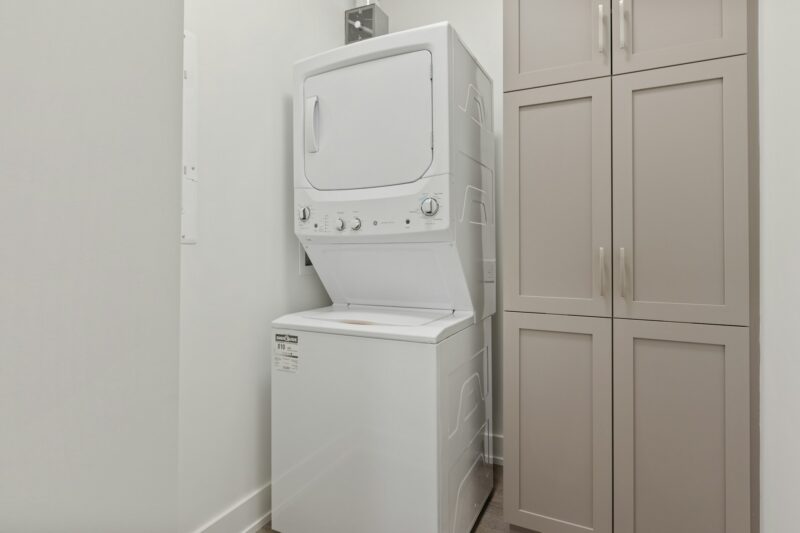A washing machine is one of the hardest-working appliances in any home. With cycles running multiple times a week, it’s easy to take its reliable performance for granted—until it breaks down.
A broken washer can disrupt your entire household routine and lead to expensive repairs or a premature replacement. By adopting a few simple habits, you can significantly extend the life of your machine, ensuring it runs efficiently for years.
This guide provides practical and easy-to-follow repair tips and maintenance practices to keep your washing machine in top condition.
We will explore everything from regular cleaning routines to understanding when professional help is needed. Proper appliance care not only saves you money but also contributes to a more sustainable home by reducing waste. Let’s get into the essential steps for effective washing machine maintenance.
Clean the Interior Regularly
A clean machine is an efficient machine. Over time, detergent residue, fabric softener, and dirt from your clothes can build up inside the drum and gasket, leading to unpleasant odors and mold growth. This buildup can also affect the machine’s performance.
How to Clean Your Washer
- Run a Cleaning Cycle: Most modern washing machines have a self-clean cycle. Run this once a month using a washing machine cleaner tablet or a mixture of white vinegar and baking soda. For a top-loader, fill the drum with hot water, add one quart of white vinegar, and let it sit for an hour before completing the cycle. For a front-loader, add a half-cup of baking soda to the drum and pour vinegar into the detergent dispenser.
- Wipe Down the Gasket: On front-loading machines, the rubber door seal (gasket) is a prime spot for mold and mildew. After each wash, wipe it dry and check for any trapped items like coins or hairpins.
Inspect and Clean Hoses
Your washing machine relies on hoses to fill with clean water and drain the dirty water. These hoses can become clogged, cracked, or loose over time, leading to leaks and water damage.
Hose Maintenance Checklist
- Check for Cracks: At least twice a year, pull your machine away from the wall to inspect the water inlet hoses for any signs of bulging, cracking, or fraying.
- Ensure a Secure Connection: Make sure the hose connections to the machine and the wall are tight. Loose connections are a common source of leaks.
- Replace When Needed: It’s a good practice to replace standard rubber hoses every five years, even if they look fine. Consider upgrading to braided stainless steel hoses, which are more durable and less likely to burst.
Don’t Overload the Machine
It might be tempting to stuff as much laundry as possible into the washer to save time, but overloading is one of the most common causes of damage. An overloaded machine puts excessive strain on the motor, belts, and bearings.
Best Practices for Loading
- Follow Manufacturer Guidelines: Check your user manual for the recommended load capacity. A good rule of thumb is to fill the drum loosely, leaving enough space for the clothes to tumble freely.
- Distribute Weight Evenly: When washing heavy items like towels or bedding, distribute them evenly around the drum to prevent the machine from becoming unbalanced during the spin cycle. An unbalanced load can cause violent shaking and damage internal components.
Use the Right Detergent
Using the correct type and amount of detergent is crucial for your machine’s health. Too much soap can leave a residue on your clothes and inside the washer, while the wrong type can cause excessive suds and damage sensors.
Detergent Tips
- HE for HE: If you have a high-efficiency (HE) front-loading or top-loading machine, you must use HE detergent. These are low-sudsing formulas designed specifically for machines that use less water.
- Measure Carefully: More detergent does not mean cleaner clothes. Follow the instructions on the detergent bottle and use the measuring cap provided. For most loads, you need far less than you think.
Keep the Machine Level
A washing machine that is not level will vibrate, shake, and make a lot of noise during the spin cycle. This constant movement can damage the floor and the machine’s internal parts.
How to Level Your Washer
- Use a Level: Place a carpenter’s level on top of the machine to check if it’s balanced from front to back and side to side.
- Adjust the Feet: Most washing machines have adjustable, locking feet. You can turn them up or down to level the appliance. Once level, make sure to tighten the lock nuts against the base of the machine to secure the feet in place.
Know When to Call a Professional
While many maintenance tasks are simple enough to do yourself, some issues require expert knowledge. Trying to fix complex problems on your own can often lead to more significant damage. For instance, if you want to learn about dryer repair, it’s often best to consult a professional to avoid safety risks.
Signs You Need an Expert
- Loud, Unusual Noises: Grinding, squealing, or clunking sounds can indicate problems with the motor, bearings, or belts.
- Major Leaks: If you’ve checked the hoses and can’t find the source of a leak, it could be an internal issue with the pump or tub.
- Failure to Spin or Drain: This could be caused by a clogged drain pump or a faulty lid switch, which is best handled by a qualified technician.
A Stitch in Time Saves Nine
Consistent washing machine maintenance is the key to a long-lasting and reliable appliance. By incorporating these simple repair tips and cleaning routines into your schedule, you can prevent common problems, improve performance, and avoid the cost and inconvenience of a premature breakdown. A little bit of appliance care goes a long way in protecting your investment and keeping your laundry day running smoothly.


